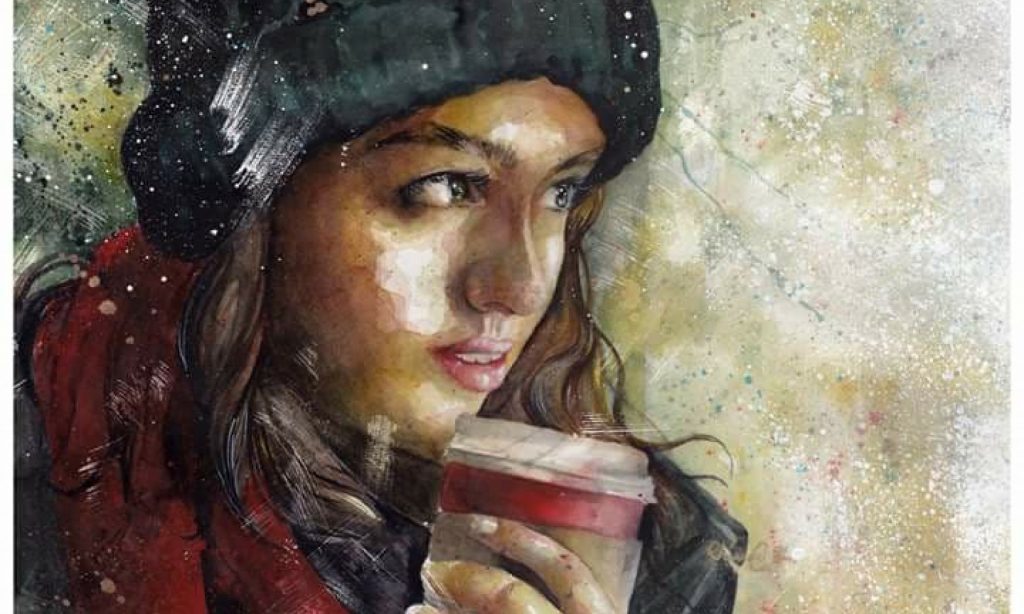Through 3 sessions in Intaglio, I have managed to go through the process of photo-etching and throughout the process I made several decisions in hope to get the best out of the image and idea.
The first decision was choosing between zinc and steel. I choose the later. For several reasons, one being price, Steel is very cheap at only a couple of pounds a plate. However also because of it’s texture it holds a background tone, and I thought as I want the background images to be as static as possible, this would help achieve this look.
The next decision was how am I going to achieve tone in the plate/image. I had three choices, either bitmap in the form of a half tone screen, a diff dither, or by threshold. We printed each option out in the correct scale and also had a second option within diff dither with an even finer dither, but in the end I choose the bitmap by half tone screen. This is because the image was the most static, and that matched again with the theme and concept of the work.
Next, in the first session I filed the plates and degreased. I couldn’t continue the process due to the fact the photo-sensitive emulsion takes an hour to cure, and then expires/deactivates in 24 hours and I wasn’t coming back for a couple of days, so we left it at preparing the plates. We only started with two of my images, because after seeing the proofs and the outcome I might not actually like the outcome, however we didn’t just want to rely on one image for me to make the decision from.
In my next 3 hour session, I coated the plates, I then waited an hour for them to cure. I then waited half an hour while they cooled down. I then exposed the plates and developed them in a soda crystal solution. Before drying them, and stopping the backs but also the fronts out where the large area of the image wasn’t to make sure they wouldn’t accidentally etch.
The next day, today, we made the decision not to aquatint the plates, because they are steel they are more likely to hold the tone anyway and not open bite. But also if we aquatinted we might of accidently disrupted the pattern of the fine dots. So we decided to first try with one plate. We chose the coat hanger, because it was the simpler of the two images.
We initially etched for 9 minutes before looking at the etch under a lens, specifically where the blue emulsion, to see whether it was etched enough but also to make sure we weren’t etching the detail away. We then etched for another minute, before checking again, and then I made the choice to etch it for another minute and a half, and we checked again and we were starting to see the edges of the blue emulsion etch away and then it was time to stop, and begin the pain-staking task of cleaning off the stop out varnish and the emulsion.

After this we proofed this plate, made sure everything was okay before repeating the process with the other plate, and printing a proof of that plate. With the proofs I only inked the area of the image, as it wasn’t essential to ink the rest, one to not waste ink or time.

After lunch, I begun to cut my plates down to size of 25cmx18cm. This size was chosen when editing my photocopies as I printed the images off at A5 and A4 and the first seemed too small and the second too large. So I settled in the middle. I used the metal guillotine, a machine which terrifies me, as I am scared of ruining my plates, and I have avoided using it for two years. Today I overcame that fear and cut one of my plates down with no mistake.
I then inked the images up again to take proofs of them with the red thread, we tried two techniques, one placing the inked up wool on top of the plate, and the other printing the image, then passing it through the press again with just the wool. I choose the first option to continue with as it was more graphic vibrant and took control over the image which relates again to my topic and theme.
These prints are not perfect. The wool isn’t evenly inked. Which I don’t mind the underinked parts but I do the over inked parts. So when I print them properly next week, I am going to ink up slightly heavier and then run them through the press on their own, to get off the excess ink, and after experimenting with the technique on Wednesday I have learned to spot the print before it has the perfect inking level.
